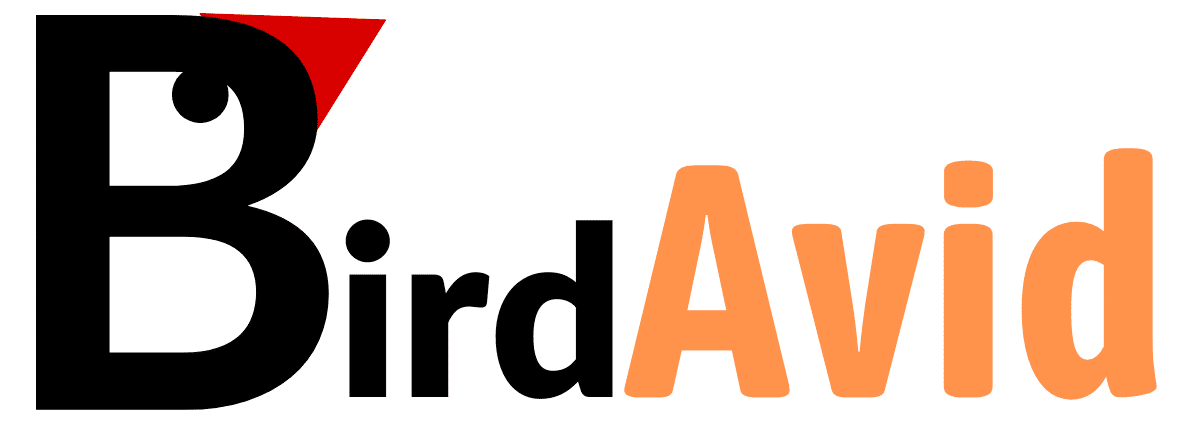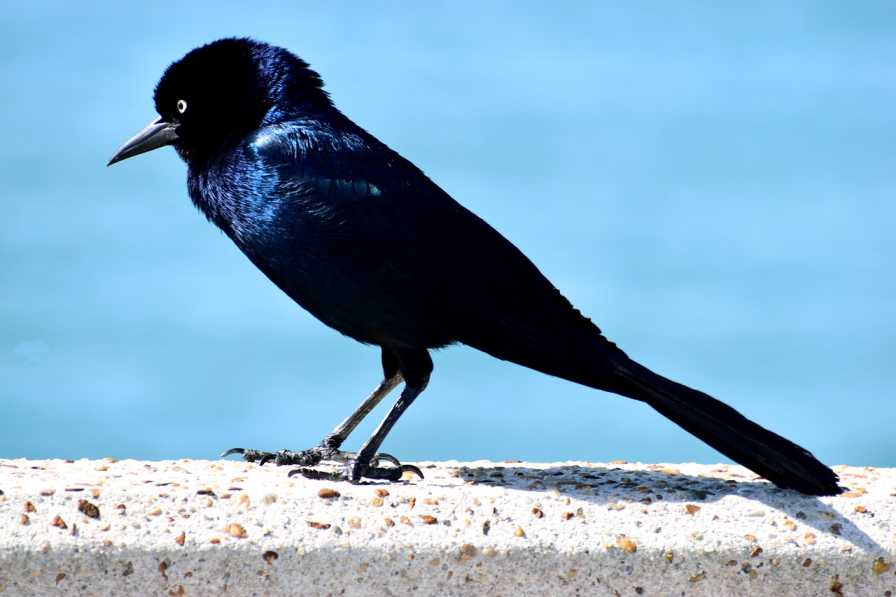It can seem weird to watch a grackle puffing up for the first time. Read on till the end to learn interesting reasons behind this behavior and other cool information.
Here’s Why Grackles Puff Up:
As a general rule, grackles are puffing up because they want to show their dominance. However, they can also puff up to attract the attention of females during the breeding season.
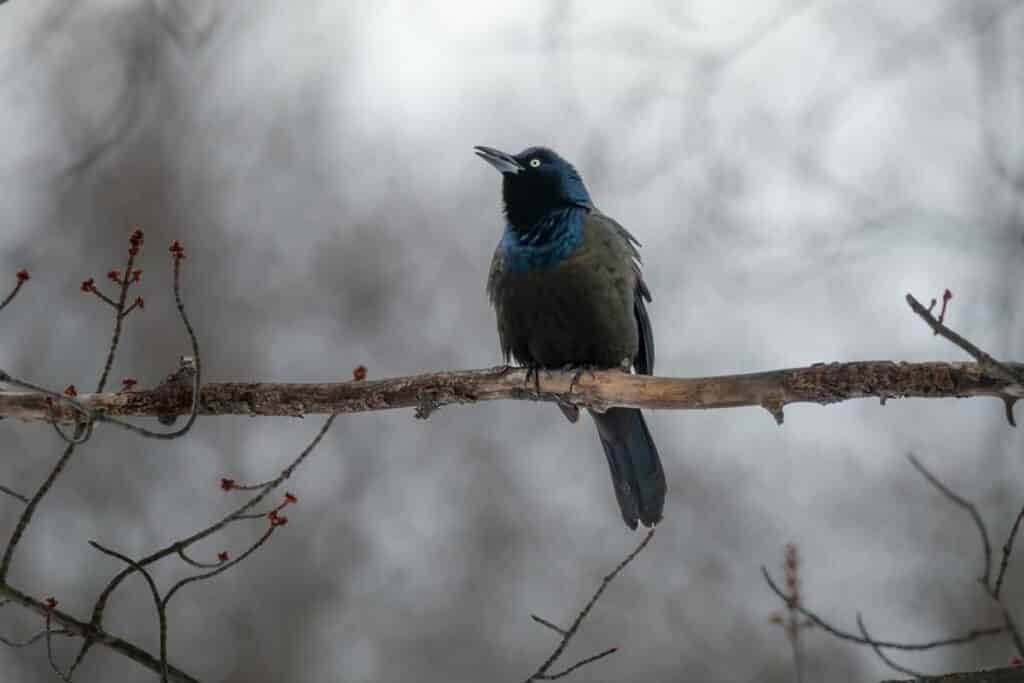
#1. Showing Dominance Over Other Males
The male Grackles can puff up and give their typical calls, especially when trying to show dominance over other males grackles.
Here’s a video in which you can see how grackles are puffing up, noticing others of their species:
#2. Attracting Females
Common Grackles generally breed between March and July.
Now, during the breeding season often, you may notice the grackles gatherings in your neighborhood.

When they are not too busy feeding at the bird feeders, you can often find them somewhere in your yard or on a bare tree displaying something.
What? You guessed it! They puff their feathers, slightly open their wings, and spread their tails. Why? Well, likely to look bigger than others and possibly to attract the females.
Even though you may not like the melody of a grackle’s song, males are ready to attract potential mates, especially when it’s the time of the breeding season.
So the excited male grackles gather up in the yard or the trees, start their song, and display in front of the curious female.
You may also notice the puffing-up behavior of grackles, along with their heads kept up. Sometimes it may look strange, and you would wonder, why do grackles look up? The reason behind it is the Bill-Up Display or the Head-Held-Up Display.
What Is Head-Held-Up Display In Grackles?
Grackles can be considered fairly smart enough. And these blackbirds also tend to have some peculiar habits like the Head-Held-Up behavior.
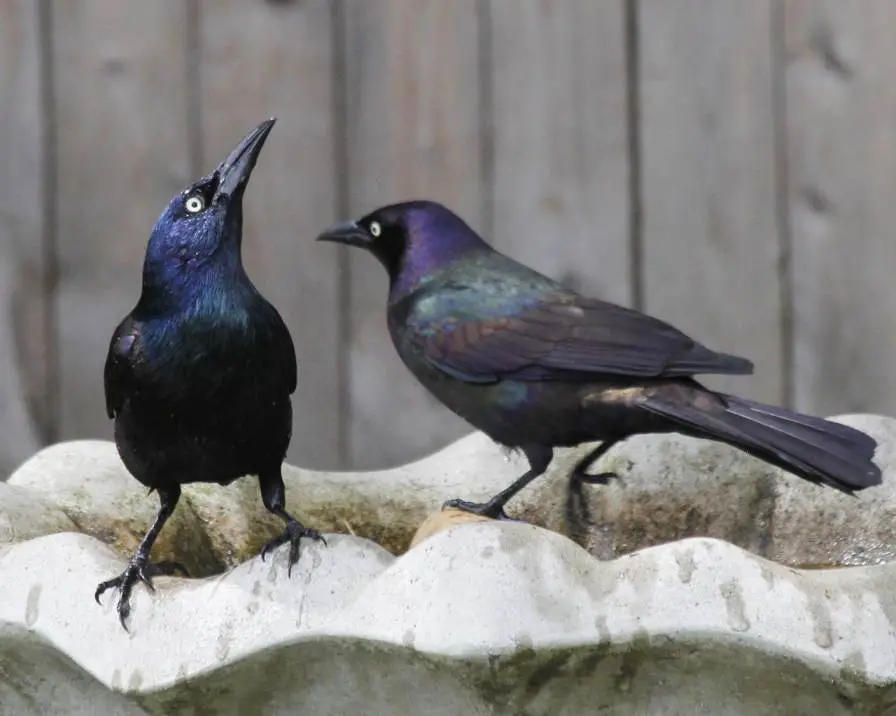
In the Bill-Up or the Head-Held-Up display behavior, grackles typically move their head upwards and try to keep their bills almost vertical.
This behavior is usually seen as a threat display. And generally, whenever a male bird gives off this display to another approaching male bird, the result is the departure of one bird.
This behavior is more common in male-to-male interactions as it is only occasionally noticed among members of the opposite gender.
And when the birds are paired, they never show or assert this kind of head-held-up display.
Also, the head-held-up behavior is only shown in the presence of another bird.
Furthermore, some of the behaviors can be noticed in the grackles as follows:
- The bills may be open or closed and sometimes tipped up and down slightly.
- Eyelids are partially sometimes drawn over the eyes.
- The nictitans can often blink arhythmically.
- The neck is typically held in an extended position.
- The body is held in a nearly vertical position.
- The breast plumage can usually be smooth and glossy. Or sometimes, it can be relaxed or fluffed up.
- The wings are generally folded, but the tip of the wings can droop below.
During this time, the bird can walk at different speeds and in different directions, or it can remain still.
The orientation of the birds can change from being directly towards the birds or being directly away from one another.
The pairing between grackles begins as soon as the females come to breeding grounds. During the pair formation, flights and mutual displays occur.
Here’s a chart that shows the types of pair formation flight:
| Flight Type: | Speed: | Notes: |
| Leader Flight | Slow to moderate | A group of males following closely behind a female |
| Chase | Fast | Female tends to be evasive |
| Together Flight | Slow to moderate | Males remain ahead, to the side, behind, or below females. |
After the flights end, the round of mutual display begins in which the male grackles usually perform the Ruff-Out Squeak (explained ahead). During this time, the males may also display the Head-Held-Up display towards other nearby males.
The Male Grackles tend to remain closer to the females and perform mutual displays. The male grackles remain more attentive during the nest-building and egg-laying process. However, that level reduces during the incubation.
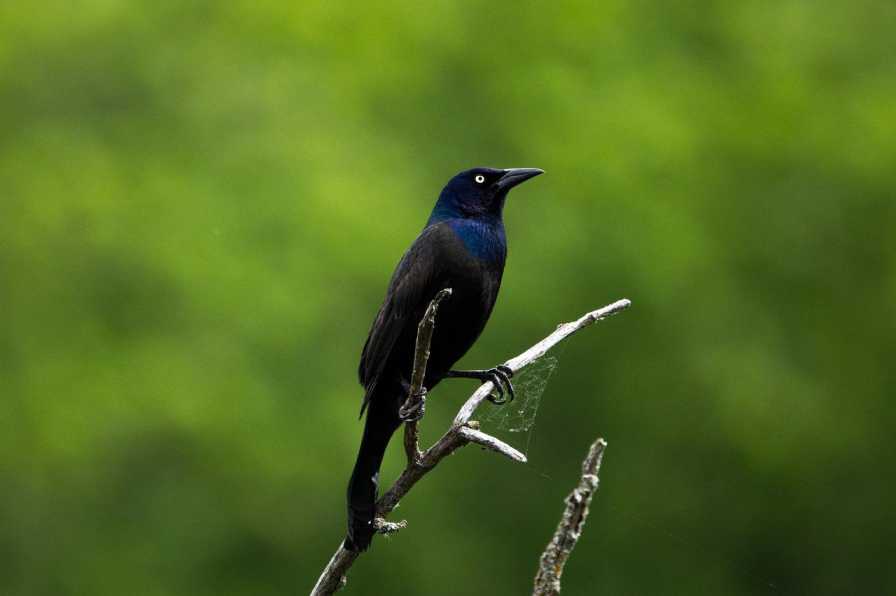
What Is Ruff-Out Squeak In Grackles?
In the case of birds, the word “ruffle” means the erection of feathers in anger or display. And squeak is the sound made by grackles.
The Ruff-out Squeak in grackles begins with the spread up of wings and tails and ruffling of their contour feathers. (Contour feathers are the ones that cover a bird’s body. They form most of the surface of the bird)
As the spreading and ruffling reach the maximum level, the grackle can rise on its leg, make the ‘squeak’ sound, flash their nictitans arhythmically, and can even take a step or two forward during the process.
The time duration of this entire display is around 2-4 seconds. The ‘squeak’ sound you hear is often the rusty-gate-like sound.
Are Grackles Good To Have Around?
Grackles are the large blackbirds of Eastern North America. You’ll often find them in large flocks. And they tend to forage on lawns as well as in the agricultural lands.

They can dominate the small birds in the feeders. And they have even been known to robins around and steal the worms right from their beaks. They can even raid other birds’ nests and fly away with a nestling or an egg.
On the other hand, though, having them around you can also have some benefits. For instance, Grackles eat insects that include various destructive insects like weevils and crop damaging caterpillars.
They are omnivorous birds. In summer, they would eat bugs. In winter, they would snack on the seeds. But they can also eat frogs and lizards.
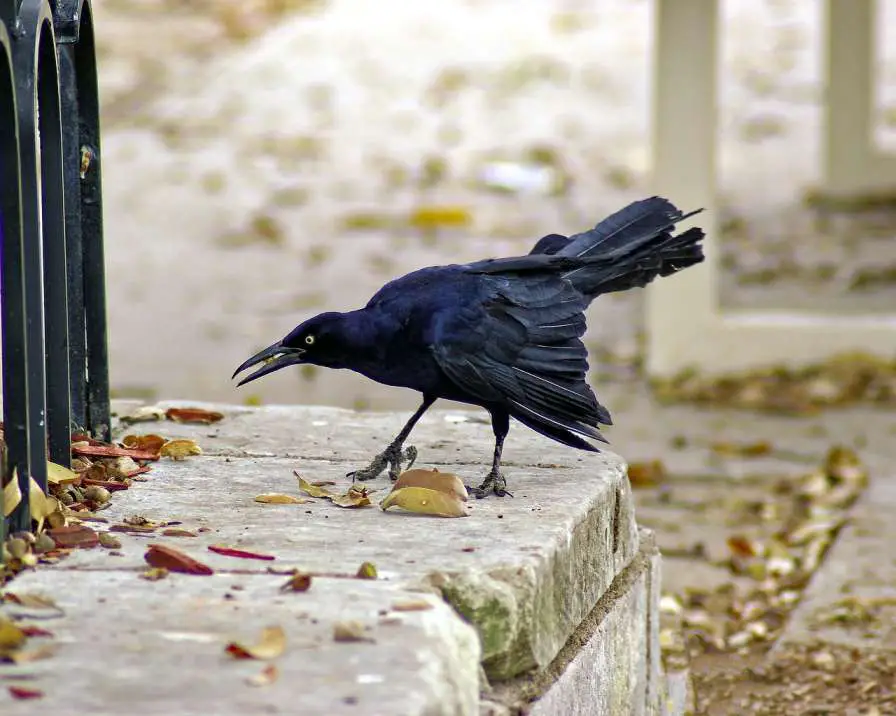
Grackles help control the insect population (and many of those which are harmful to plants).
And if we see from the broad spectrum of things, they are also part of the natural food chain – which means they eat up the things and the other things then eat them up. (Grackles are the prey food for other creatures like foxes and hawks.)
So whether there are good or bad is how you consider them. I have highlighted both sides. Now it’s up to you.
Final Thoughts
In short, grackles are puffing up for dominance or as a part of their behavior during the mating season. Sometimes you may notice the puffing up behavior with bill-up (head-held-up) behavior.
So the next time you watch the cool grackles puffing up, I hope you can enjoy the scene more than before as now you know the exact reasons. Happy Birding 🙂
Recommended Further Reading:
